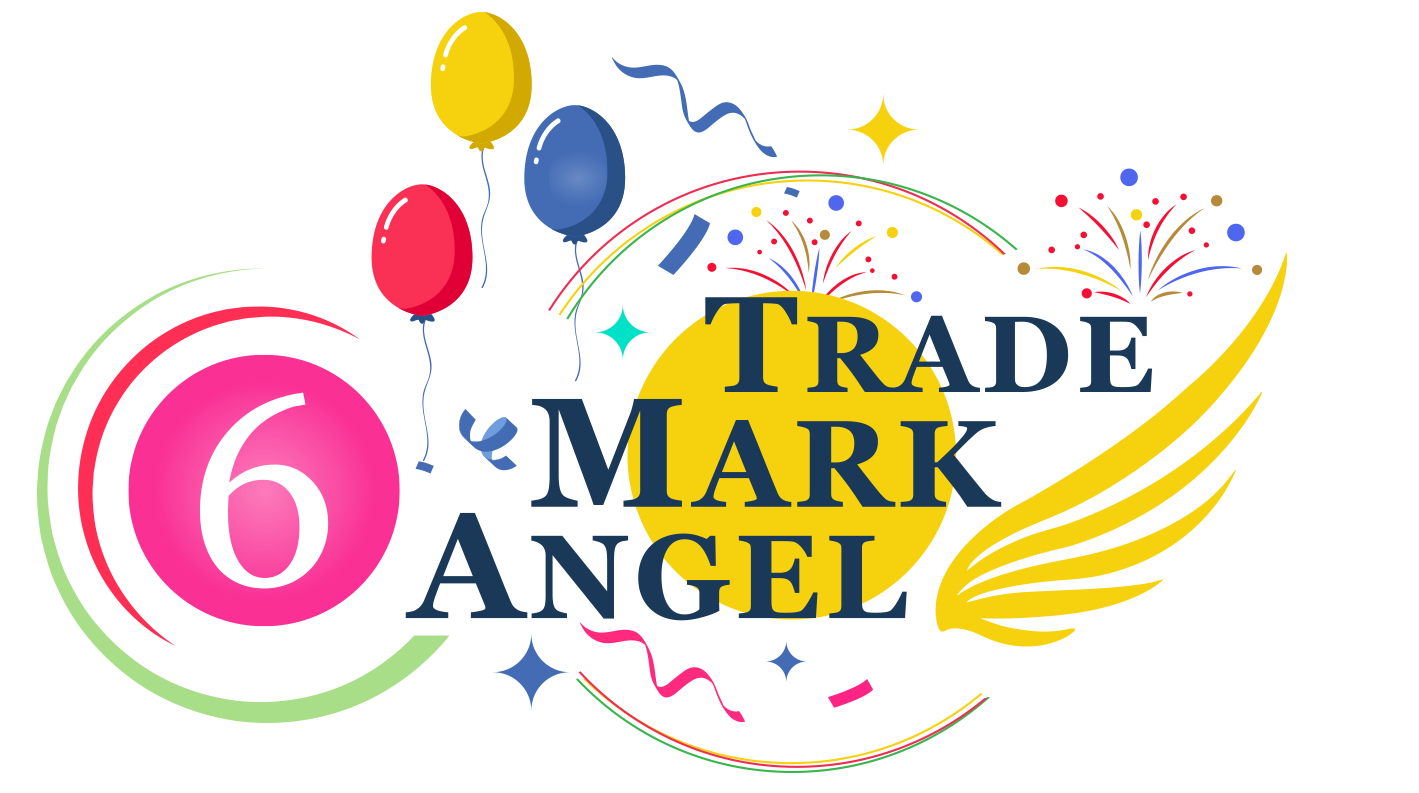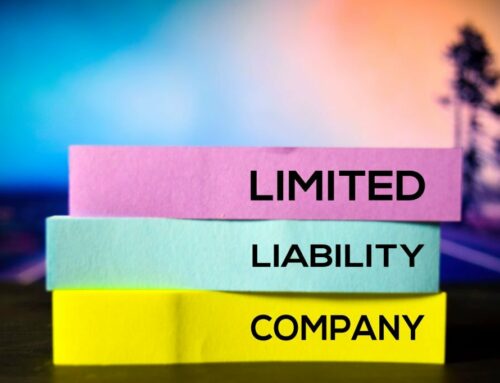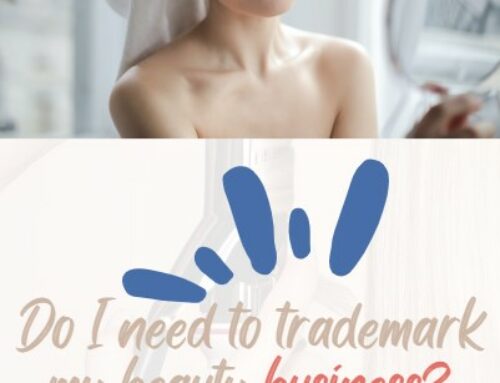Guide to trademarks: Take your time to read this guide to trademarks. It will answer most of your questions about trademarks. (Updated August 31, 2021)
It’s always cool to own a property. But if the property is a trademark, it is even more exciting, isn’t it?
But do you really know what your trademark is? What you can trademark and what you can’t? What rights and power you get after registering your trademark?
If your answers are negative or you are bewildered when it comes to trademarks, keep reading. This guide to trademarks will help you clear up the confusions and get the answers in really plain English.
-
Do I have a trademark? What is my trademark?
In general sense, brand names, company names, product names, logos or slogans are all considered trademarks. These are obviously trademarks, but there’s a dealbreaker. In the absence of a dealbreaker, none of these are trademarks.
The dealbreaker is to use the trademark on actual goods and services.
In other words, a trademark is what you put on your products to identify them as yours and to make it easy for your customers to find them later. You may put your trademark on tags, labels, instruction manuals, containers, or on the packaging. A trademark is like a key word or a light-house that eliminates the necessity of having to remember the company name that makes those products.
In case of services, a trademark is what you put on your marketing materials, invoices, business card, brochures, photographs of business signage and billboards, and webpages (usually in the header).
So, your company name may or may not be your trademark. Your company name can be a trademark ONLY if it is used in sales or trade of your goods and services to identify them.
For example, your company name is Elite Apparatus Inc. You think that your brand name is “ELITE APPARATUS”, but you put the logo 
So, your trademark is actually the logo 
You can find more information here:
-
What should I trademark?
You spent countless times and lots of money to develop a brand name. You designed a unique and meaningful logo by trial and error. No doubt you want to protect it.
In order to protect the brand name and the logo, the first step is to make sure that you put (or plan to put) the exact brand name and the exact logo on your products & services.
If you don’t want to put both the brand name and the logo on your product because it would look crowded or aesthetically unpleasant, you should instead put your trademark on your products.
For example, you sell different kitchen utensils including cold drinks, tea and coffee beans. Your brand name is “THE ABSOLUTE”. You use “THE ABSOLUTE COCOA” for your tea and coffee beans and “THE ABSOLUTE UTENSILS” for your kitchen utensils.
So, which one should you trademark?
You actually have two trademarks here –
- “THE ABSOLUTE COCOA” for your tea and coffee beans, and
- “THE ABSOLUTE UTENSILS” for your kitchen utensils.
Although your brand name is “THE ABSOLUTE, it’s not your trademark since you don’t put it on your products. An easy fix would be to put descriptive words like “cocoa” and “utensils” in slightly smaller font and below the words “THE ABSOLUTE”. In this case, your trademark will remain “THE ABSOLUTE” since it is shown prominently and stands out. However, if both “THE ABSOLUTE” and “COCOA”, or “UTENSILS” are the same size, then your trademarks will be “THE ABSOLUTE COCOA” and “THE ABSOLUTE UTENSILS” respectively.
-
Is it possible to file a “generic” trademark?
You have a trademark that you want to protect but you don’t know yet what you will sell under this trademark. Being in the product research stage, you are worried because the products you have chosen now may be replaced with others within a couple of months.
So, your desire is to simply register the trademark without defining any product to keep the brand name open so that you could use it for all products that you may theoretically produce.
It is, however, NOT possible.
A trademark application is always filed for specific products and/or services. You can’t file a “catch-all” or “umbrella” trademark application without identifying certain products and/or services to offer.
So, what should you do since you are unsure about which products to sell?
Well, the general practice is to file the trademark application for the most obvious products you want to sell. Once you come up with different or additional products, you can file a new application for the same trademark. But, you have to make sure your trademark is registrable in relation to the products for which you chose to file the trademark.
For example, you came up with a coined name, DEMA, from the first two letters of each of your sons’ names, Dean and Mark. Although you don’t have any idea as to what you will be selling under this trademark, you want to protect the name so nobody else can use it in any way.
However, you are not allowed to protect DEMA without identifying at least one product or service.
After researching an array of products, you are now inclined to sell shampoo, conditioner and other hair care products. At the same time, you are hoping to add kitchen utensils to your product line, but that’s only a possibility.
Now, what will be your best course of action?
In your case, the best course of action will be to file a trademark application for DEMA for hair care products. Once you decide to add another category to your product line, such as kitchen utensils or supplements, file for another application for DEMA for the additional goods.
In your case, the best course of action will be to file a trademark application for DEMA for hair care products. Once you decide to add another category to your product line, such as kitchen utensils or supplements, file for another application for DEMA for the additional goods.
For a more in depth reading,
-
Exclusive power over the trademark
A common misconception regarding trademark registration is that it gives the owner an absolute power over the trademark. Unfortunately, this is not correct. Registration of a trademark does NOT give the owner exclusive power or monopoly over the trademark.
It may sound absurd, but that’s the truth!
It obviously gives you the legal right and protection, but legal rights are only limited to products and services that are included in your trademark application. Other people are allowed to use and register the exact trademark for completely different and unrelated goods and services.
Let’s say, my trademark CELULAP is registered in the US for clothing and footwear. You may also be able to register CELULAP for a completely different line of goods and/or services, such as cosmetics or consultancy services in the field of advertising as these are not related to clothing.
However, you cannot register CELULAP for socks or hats as these are similar to clothing. Check:
-
Importance of selecting specific products and services
By this time, you already know why we have to choose specific goods and services while filing a trademark application.
Now, the question is whether you should select all the products that you are planning to sell because you don’t know which specific product(s) you will be selling in the future.
The answer is “yes”, you can, but it’s not advisable to include all products you are planning to sell.
It may sound tempting to include plenty of products in the trademark application to get maximum coverage. But, in reality, it brings some long-running problems, such as –
a) It will lead to a longer registration process. This is the case especially with the US where using the trademark with the products and services is mandatory for registration. If you include goods which you are not going to sell in the near future, you may delay the registration process. Your trademark will not register until you sell ALL the products listed in the application with the trademark on them (or until you delete those products that you decided not to sell).
For example, you sell WEEPAL branded cellphones in the US and you have a plan to sell watches sometime in the future. In this case, while you can file your trademark application for both cellphones and watches, your trademark will not register until you actively start selling your WEEPAL branded watches in the US.
So, the decision on how many products to include is yours.
b) Adding too many products may lead to more objections. Your trademark may have good chances of achieving registration for certain goods and services, but it could be problematic for others. Your desire to add a range of products may trigger objections, even oppositions from third
As an example of this scenario, of one of our clients filed an application for the 

c) Non-use Cancellation
In many countries, any interested party can file a non-use cancellation action against a mark if there has been no use of the mark on all products covered by the registration for a certain period of time. If non-use of the mark is proven, the registration may be canceled for those products.
Also, if you are unable to file a mandatory affidavit of use 6 years after registration in the US, your trademark will be automatically cancelled.
-
How to select correct products and services
Now, you know how important it is to select specific products and services for your trademark application and not be tempted to include a huge list of products and/or services that you may or may not offer in the future. It is time to learn how to select appropriate products and services.
Here are some tips for you to consider:
a) Do the research. Determining the appropriate goods and services is equally important as selecting a great trademark. This is why you should start product research even before developing a trademark.
b) After brainstorming, you may come up with a list of 10-15 products that you may possibly sell. These 10-15 products may belong to the same trademark class depending on their nature of similarity or they could fall in 10-15 different trademark classes.
Each class of products and services comes with a Trademarks Office filing fee (government fees). The more classes you include, the higher the filing fees. This is another reason you may not want to include too many classes in your application.
c) Based on your financial and other capabilities, you should develop a mini business plan and itemize the products you may be selling in the next 24 months.
d) Now you have the final list. This is the list of products that you would like to include in your trademark application.
It is perfectly normal to change your plan and line of business down the road. You can’t change the goods and/or services that you initially included in your application, but you can always file a new application for the same trademark for the additional goods and/or services. You can always delete unwanted goods and services from your existing trademark application though.
You may be thinking how on earth the giant retailers out there have only one trademark but selling thousands of products? You may be surprised but, in fact, they have hundreds of trademarks to cover all of their products. For example, Walmart alone has more than 400 active trademarks.
In nutshell, you start trademarking with a narrow range of goods and expand it as you grow.
We invite you to check our articles on this topic:
7. I know what my trademark will be and have decided which products to sell, what’s next?
Once you determine potential product(s) that you plan to sell under your trademark, the next step is to do a trademark search; in other words, to make sure that your trademark can be registered for the products that you’ve selected.
What a trademark search does is that it reveals the possible threats that could hinder the registration of your mark.
Please read this article about the importance of trademark searches:
It’s worth remembering that only an expert in trademarks can help you to identify the threats. Because while the existence of a similar mark may suggest a possible problem, it may not be one in reality and vice versa. Similarly, you may think changing the spelling of a trademark makes it different from a previous similar mark, but, it does NOT actually.
As an example, one of our clients applied for “RAY’S TOYS” in the games and toys category, but was refused registration on “confusion grounds” because of “RAY’S FIRE STATION” for similar products. Since “TOYS” is a descriptive word, the only strong word in the proposed mark is “RAY’S” which is the same word component of the registered mark.
You can learn more from here:
8. Word mark or logo?
You can file an application for a trademark as a word mark (text only), a logo (image), or combined mark (text+image together). As a general rule, we recommend filing an application for a word mark, but sometimes it’s a good idea to file for a combined mark. However, a unique logo is always worth protecting.
Please check:
It’s important that your trademark is used in commerce exactly as it is applied for registration. Kindly check the below article regarding this:
9. Resources for Amazon sellers
If you sell on Amazon, you know that having a trademark is crucial nowadays. Without a registered trademark, you cannot get into Brand Registry and get access to A+ content.
Read our article about how to get into Amazon Brand Registry quickly:
If you want to learn how to use A+ content in Amazon Brand Registry, then this article is worth reading:
If you are in trouble and your Amazon account has been suspended or you want to remove hijackers from your listing, you should read:
- Common Ways Amazon Seller Accounts and Product Listings Get Suspended and How to Avoid Them
- TIPS To Remove Hijackers On Your Amazon Listing
Additional reading:
10. Copyright
We can also register your copyright in the US and Canada. It can be an invaluable tool especially if you sell on Amazon.
You can find exhaustive information about different packages we offer here:
11. Useful Links:
a) Why do you need to bother about a trademark? Read about the benefits of trademark registration in this post:
- What are the benefits of registering a trademark?
- And an extended article about trademark registration benefits.
b) Watch this cartoon to get some idea on
c) You developed a brand name but not sure if it’s unique enough?
Perhaps you are concerned that your trademark may be weak or descriptive?
d) Would you like to file an application for a trademark which is dead now? Read this to get your answer:
e) You have a nice brand name, a unique logo and a catchy tagline. Are you wondering how to protect them? This post is for you:
f) Not all trademarks are registrable. See this short cartoon:
- What kinds of trademarks aren’t registrable? and read this article
- When should I not file a trademark?
g) An important reading on using the correct version of the trademark on your product packaging:
h) Are you unsure about when and how to put trademark symbols? See this cartoon:
i) What happens after registration?
It is necessary to file maintenance documents for your US trademarks:
Other than that, all trademarks have to be renewed every 10 years. Please pay attention to our email reporting registration where we outline important deadlines.
Glossary:
1. Trademark classes:
All goods and services are categorized into 45 classes according to an international classification of goods and services or the Nice Classification system. These classes are not the same as the product categories on Amazon.
For example, “pet supplies” on Amazon can fall into multiple trademark classes, like class 5 for pet supplements, class 18 for pet clothing, class 31 for pet foods, class 20 for pet beds and so on.
If you want to learn more, please read this post:
2. Government fees:
Each trademark class comes with a government filing fee. In the majority of countries, government fees are paid for each class of goods and services. Check out:
- What are government filing fees?
- Will the Trademark Office refund the government fees if my trademark is refused?
These fees go straight to the Trademark Office. As such, they are not refundable.
3. Approximate timeline for registration
US: Usually 12-14 months; longer if there are office actions (objections from the Trademarks Office)
UK: 4-4.5 months
EU: 3-4- months (with Fast-track examination)
Canada: Usually 36-42 months; longer if there are office actions
Australia: 8-10 months
Germany: 13 months; 10 days to 2-3 weeks with an accelerated examination request
China: 10-12 months
India: 10-12 months
Japan: 10-14 months
Mexico: as short as 2-4 months or as long as 10-12 months
Brazil: 12-18 months
Check this post for more details:
4. Office actions
During the registration process, we may receive objections from the Trademarks Office. They are called office actions. Below post explains what they are.
Other relevant articles are mentioned below:
- Why is “Merely Informational Matter” Refused Trademark Registration?
- If your US trademark is suspended, what does it mean?
5. Oppositions
If your trademark is approved by the Trademarks Office, it is published in a special journal (official gazette) for opposition purposes. During the publication period, which varies from 30 days (in the US) to 3 months (in the EU), any third party may object to the registration of your trademark. Read more about an opposition process below.
- What is a Trademark Opposition?
- What to Do if Your Trademark has Been Opposed
- How to oppose somebody Else’s Trademark?
6. Statement of Use
In the US, a trademark application can be filed on several bases. Two of them are very popular: “actual use” ( applicant already sells its own branded products in the US) and “intent to use” basis ( future sales in the US).
If the applicant is yet to use the mark in the US, the application needs to be filed based on an “intent to use” basis. But, as the trademark will not register until it is used in the US, we have to change the basis from “Intent to use” to “actual use” later. To do this, we have to file a Statement of Use and submit relevant proof of use, otherwise known as “Specimen of Use”.
Read these posts to learn more:
In many other countries where we file trademark application, statements of use are not required. The US is unique in this case.
Sometimes, it may be a good idea to divide a trademark. Check when:
7. Specimens of use
“Specimens of use” show how you use the mark in association with your products and services.
Examples of acceptable specimen of use for products are:
- Photographs, labels, tags, instruction manuals showing the trademark on the actual goods or on the packaging.
- Webpages that contain the mark and a photo or textual description of the products and the means to purchase the products.
- For clothing product – hang tags, collar tags, inside labels or on the breast area (for t-shirts) or inside of a cap.
- The following items are not acceptable specimen of use for products: handbills, business card, advertising circulars, leaflets, flyers and other advertising materials.
Examples of acceptable specimen of use for services are:
- Photographs of business signage and billboards, brochures, advertising and marketing materials, invoices, business cards, etc.
- Webpages that show a direct link between your trademark and the services offered under the trademark.
An important note: Photos taken of your trademarked goods or services should not be digitally edited or have filters applied to them. The Trademarks Office will reject specimens of use that have been altered using a computer software. In fact, something as simple as a photo taken with a mobile phone camera can suffice.
If you’re unsure about which specimens of use are acceptable, or you’d like to know what they constitute, please check the following links:
- What is a specimen of use?
- When do you need to submit specimens of use? and
- How do I find an acceptable specimen of use?
Special rules apply to specimens of use for clothing:
A more in-depth article about specimens of use:
8. Do you want to buy a trademark or perhaps sell your own trademark and transfer to another company?
Check these articles:
- Can I buy someone else’s trademark?
- Trademark Assignment: Buying or Selling a Trademark
- What are Trademark Assignments? How can I transfer my trademark to somebody else?
9. What does registration process look in different countries? Why is it important to file in other countries?
Check these links:
- What is the Canadian trademark registration process?
- Steps to US trademark registration
- Please explain trademark registration process in Mexico
- UK Trademark registration process
- Trademark registration in Australia: how to register a trademark in Australia?
- Trademark Registration Process in Germany?
- Trademark registration process in China
- Why you should file your trademark in China now?
- Trademark registration process in Brazil
- Trademark registration process in Japan
Trademark Angel Policies are summarized below for your convenience:
- Why should I use Trademark Angel to register my trademark?
- How does the process work with Trademark Angel? What happens after I buy a trademark package?
- How soon will you get back to me about my trademark?
- What is “I changed my mind” guarantee?
- What’s your refund policy?
- Do you offer a payment plan?
- What is your upgrade policy?
Do you have more questions or are still confused? Did the guide to trademarks answer all your questions?
Please book a complimentary phone call by using this link.







Leave A Comment